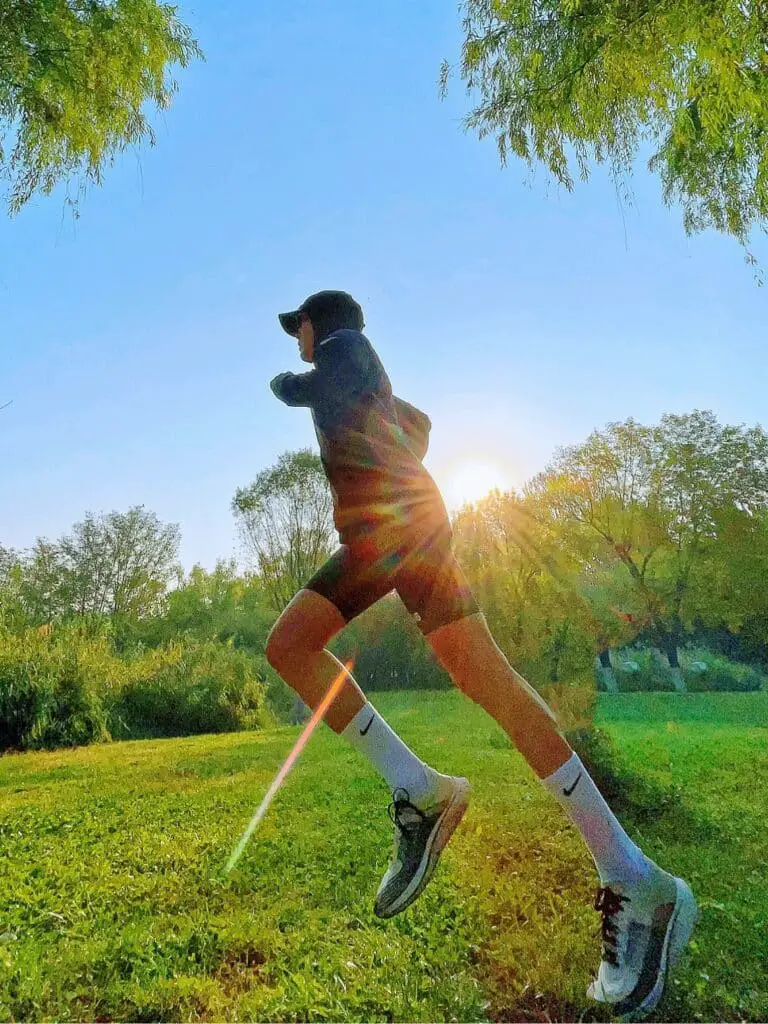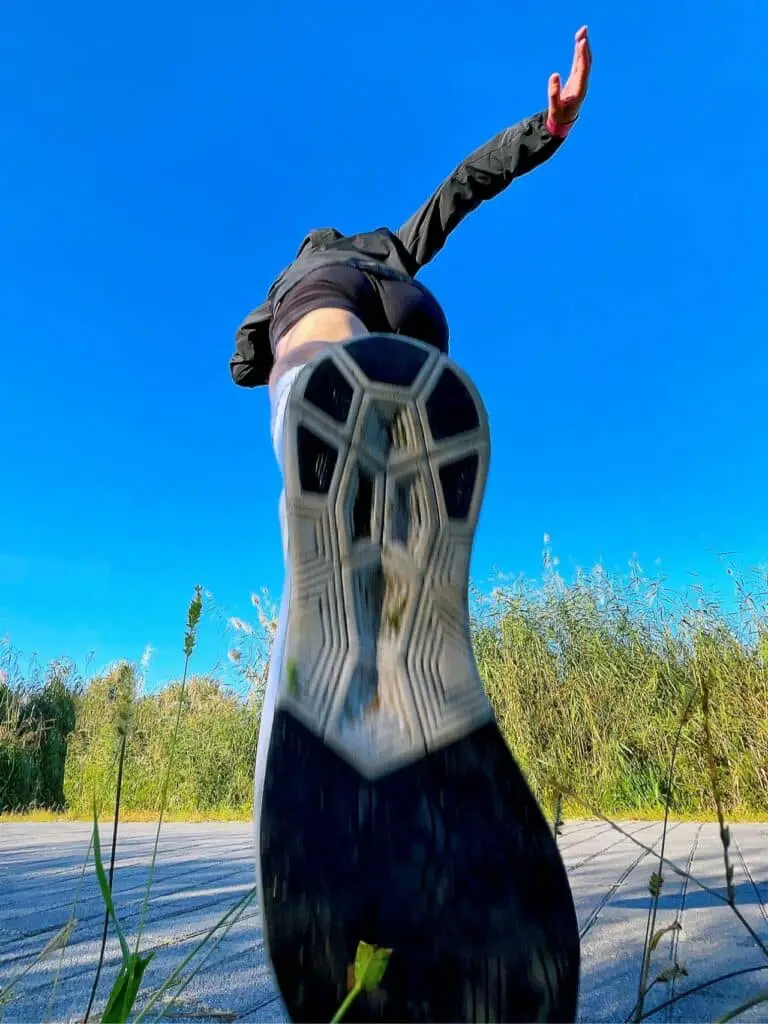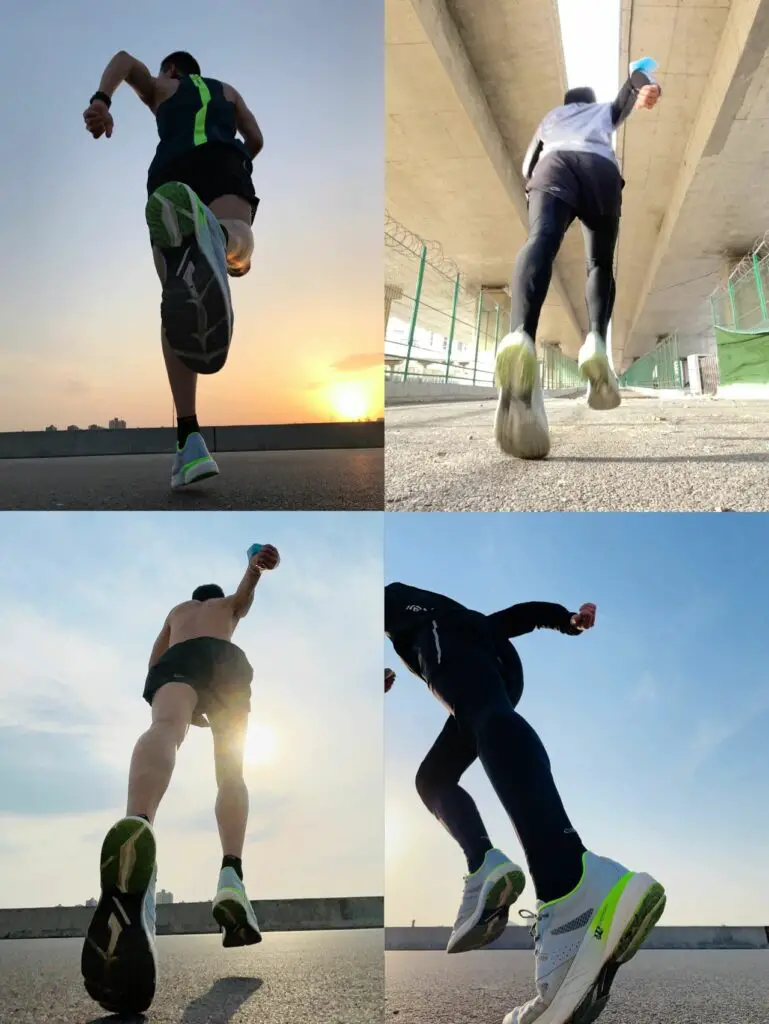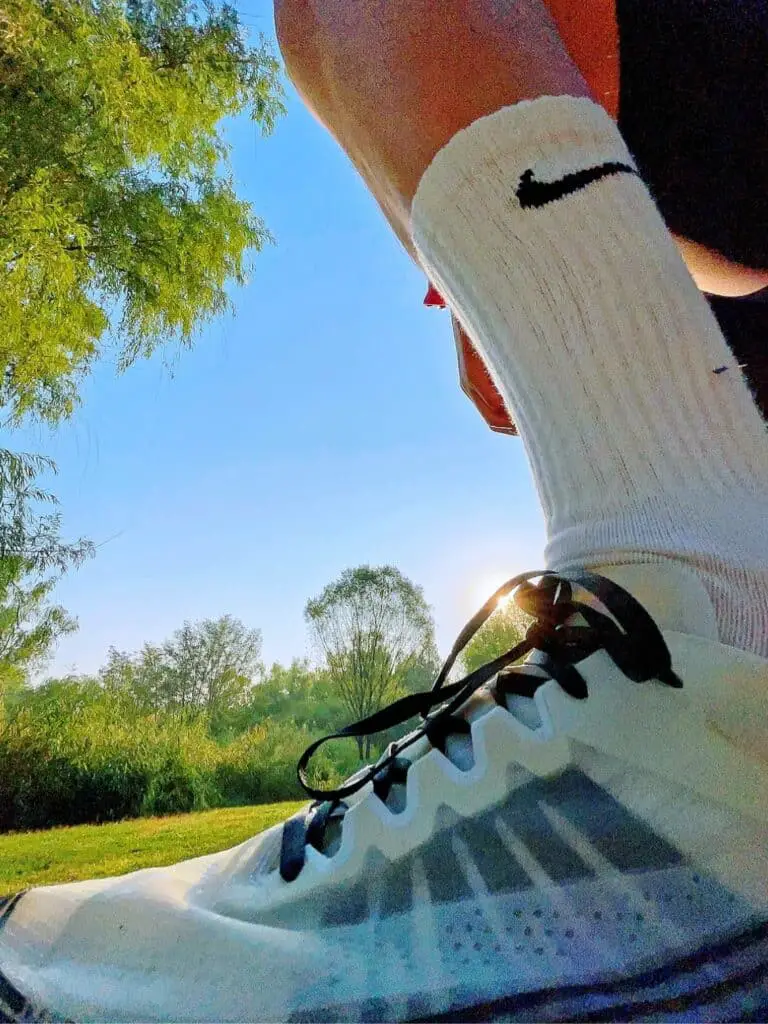Hoka vs Brooks: Check The 10 Differences Before Buying
Table of Contents
- 1 Hoka vs Brooks: Check The 10 Differences Before Buying
- 1.1 Hoka vs Brooks: 10 main difference
- 1.2 When Should You Choose Hoka Running Shoes
- 1.3 When Should You Choose Brooks Running Shoes
- 1.4 Hoka vs Brooks for Walking
- 1.5 Hoka vs Brooks for Standing All-day
- 1.6 Hoka vs Brooks for Plantar Fascitis
- 1.7 Hoka Vs Brooks for Back Pain
- 1.8 Hoka vs Brooks for Nurses
- 1.9 Brooks Vs Hoka for Knee Pain
- 1.10 Brooks Vs Hoka: Which brand is better for long-distance running?
- 1.11 Conclusion
Choosing a pair of good running shoes is sometimes very overwhelming. A quick search online, and you are bombarded with a myriad of options. Things get complicated when choosing between two top brands Hoka and Brooks.
If you have been running for many years, like me, you probably already have a favorite between these two. Still, from my experience, I can tell you the right brand between these two is highly subjective. For instance, Brooks is the right choice if you want something fairly inexpensive. Hoka is your best bet if you are looking for style.
That said, there is still way more to the choice than this. You must look beyond style and price and focus more on comfort and functionality. So which one will work best for you?
In this article, I will make it easier to decide. I have been running for over a decade and have worn running shoes from several brands. I compare the two brands side by side using 10 key features. Plus, I will tell you the best brand for walking and foot problems like plantar fasciitis. So make sure you read to the end!
Hoka vs Brooks: 10 main difference
1. Brand Background
Choosing a running shoe brand that has been around for a while is important. It takes many years of research to develop the perfect running shoe. Only a brand that has been around long enough truly understands this.
The good news is that both Hoka and Brooks have been around long enough. Many seasoned runners like me grew up wearing Brooks shoes.
Hoka is not that old compared to other shoe brands. The company started operating in 2009 but has already won a huge market share. The company was founded by two trail runners. The founders hence understood what makes a good running shoe.
Brooks has been around much longer than this. The company started operation in 1914. Initially, they focused more on making ballet shoes. They eventually ventured into manufacturing shoes for sports like football and baseball. Their first running shoes came out in the early 1970s. The company now has one of the widest selection of running shoes for all kinds of runners.
2. Shoe Design
The shoe design largely depends on the specific model you buy. Both companies now offer a wide variety of running shoes. It is hence not easy to compare the over design. Still, each brand has some distinct characteristics that set its shoes apart.
For instance, Hoka shoes are famous for their maximalist design. These shoes tend to have quite a distinct design and thick soles. Hokas also have a high stack height that comes from the use of excess amounts of cushioning.
Hoka shoes look so chunky that many runners are often skeptical when seeing them for the first time. Personally, I thought at first they were too massive to be good running shoes. They are surprisingly quite lightweight and super comfortable. Plus, they also have the looks thanks to their cute bright colors.
Brooks takes a more traditional approach when it comes to shoe design. Their shoes have a minimalist design and are just what you expect a running shoe to look like. They focus more on keeping the shoe weight down and making it as comfortable as possible.

3. Cushioning
Looking at Hoka shoes, it should be obvious they have one of the best cushioning. Hoka was started by trail runners who seem to have paid more attention to cushioning. Their shoes offer the most generous cushioning.
Hoka shoes are famous for their marshmallow-like softness and always feel super plush. The company also provides 3 levels of cushioning. Their fantastic cushioning is mostly thanks to the molded EVA foam insole. Hoka also uses its PROFLY cushioning technology.
With Brooks, the cushioning will largely depend on the shoe model and its purpose. They generally use two types of cushioning; BioMoGo DNA and DNA LOFT. The right cushioning depends on what you want. For instance, DNA LOFT provides the softest cushioning. BioMoGo DNA adapts better to a runner’s gait to ensure maximum support.
4. Outsersoles
The massive outsoles on Hoka’s shoes are unmistakable. The brand gives its shoes thick outsoles to ensure maximum stability. The larger soles also give runners a smooth ride on different terrains.
A huge chunk of the sole on most Hoka shoes is made from EVA. I love this material choice as it makes the shoes super lightweight. Still, Hoka also uses rubber for the high-impact areas of the sole. This minimizes wear and enhances traction.
With Brooks, you get a more traditional rubber outsole. Their outsole focuses more on providing maximum traction. The unique treading patterns also ensure good performance on any terrain.
5. Upper Materials
Mesh is always my first choice when choosing the best shoe upper material. Most runners love mesh for its breathability. I love it because it contours nicely to any foot shape. It thus makes the shoe feel even more comfortable.
Hoka shoes are designed to maintain the same level of plushness as the rest of the shoe. The brand mostly uses engineered mesh for the uppers. They also have a few shoe models made with a leather upper. From my experience with both brands, Hoka needs to work a little more on breathability.
Brooks uses mesh for the uppers on all their running shoes. Their shoes are some of the most breathable you will find anywhere. I also like that the upper feels a little stretchy. The stretch makes it even cozier. Some models have an extra thin tongue. This design allows runners to keep the shoe tighter and also reduces the overall weight.
6. Shoe Stability and Support
The stability and support you get from Brooks running shoes is hard to beat. The company has invested many years in research and resources to achieve this. The outcome has been the development of some of the most supportive running shoes.
Brooks shoes are scientifically designed to accommodate a runner’s specific gait. They also use the innovative GuideRails that any runner can wear. This technology allows even supinators and overpronators to get the right support.
Hoka also offers decent support and stability. The maximal design provides most of the stability, but the company goes beyond this. They often use their J-Frame technology for this. Their shoes also have a firmer foam midsole that also helps with this.
Hoka will allow you to choose the shoe support you want. They have three main support options; neutral, stable, and moderate. You should hence be able to find a shoe that meets your specific needs.

7. The Fit
Many people think that a running shoe’s fit only depends on the size. Runners like me will tell you this could not be further from the truth. How the shoe is designed greatly impacts how it will fit.
That said, Brooks shoes have the best fit. Most of their models are always true to size. I have never had to go a size up or down or even half a since I started wearing Brooks. I love their fit because they all have roomy toe boxes, which is vital for foot health. The larger toe box ensures you never have to worry about uncomfortable toes. Or even getting toe holes.
I also love that most Hoka shoes are true to size. You should, however, note that you will not get the same roomy toe you would get with Brooks. Their shoes often feel quite narrow. You might need to go at least half a size up if you have wide feet.
8. Shoe Types
Brooks has been around much longer. In recent years, they have been focusing more on running shoes. It should be obvious that they have a larger catalog and a variety of running shoes.
Brooks makes the following and many other shoe types for runners:
- Stability shoes: They include shoes like Brooks Adrenaline GTS. These are designed to provide extra support for overpronators.
- Neutral shoes: These are for runners with a more neutral and natural gait. A good example is Brooks Ghost. The shoes have a more balanced cushioning.
- Performance shoes: Geared towards performance and speed.
- Trail Runners: Made specifically for trail runners. They provide maximum grip on rugged terrains.
Most Hoka shoes look similar from afar. They often have that distinctive chunky look. The truth is that the company also has a variety of shoe types for runners. Here is a quick overview of some of the most popular ones:
- Trail Runners: A good example is the Hoka Speedgoat. These shoes are designed to tackle the most challenging trails.
- Stability Shoes: These are for runners that need that extra support. They often have both stability and motion control.
- Racing Shoes: Models like Hoka Carbon X and Rincon are designed to be more lightweight. They cater to runners looking for extra speed for racing.
9. Shoe Service Life
The shoe’s durability also depends on how you use it. Most running shoes I have owned hardly ever last past the 6 to 8 months mark. Many running shoes are designed to last between 200 and 600 miles only. Still, I have some pairs that have lasted over 2 years of regular use.
That said, the typical service life for both Hoka and Brooks is the same. Hoka shoes are rated to last anywhere from 400 to 600 miles. These shoes should last well over 6 months even if you wear them daily.
The typical service life of Brooks shoes is between 300 and 500 miles. It may look shorter than what you get from Hoka, but they will last almost the same.
10. Price
Shoes from these top-tier brands are costly. You need to keep this fact in mind before you decide to buy from either.
That said, what you pay will largely depend on the specific model. Other factors like where you are buying and when also come into play.
You should expect to spend between $80 and $150 on average for a basic Brooks running shoe. Hoka is a little more expensive. Their most basic models start at around $100 and can easily reach $200.

When Should You Choose Hoka Running Shoes
Choosing between these two fantastic shoe brands will ultimately depend on your preferences. You might even want to own both if you are a regular runner like me.
Hoka is your best bet if you are a trail runner. These shoes were originally designed to cater to the needs of other trail runners. You can be sure they will have enough cushioning and support to tackle any terrain.
Hoka is also a good choice if you are more concerned about getting maximum cushioning. The shoes offer superior cushioning and will be perfect if you have flat feet. They also work perfectly for foot problems like plantar fasciitis. Plus, you can also easily fit orthotics in these shoes.
When Should You Choose Brooks Running Shoes
The fact that a huge chunk of professional runners wear Brooks should tell you something. The brand has some of the best shoes in the market for everything. They have something for trail and track running and even marathons.
Choose Brooks if you want shoes that offer comfort and stability. Brooks shoes are the kind that gets the job done with little fuss. And they will also look good on you.
Brooks shoes are also perfect if you want shoes that cater to your specific foot type and running style. They have a wider variety of shoe models designed for specific runners. For instance, it is easier for overpronators to get a shoe that suits them from Brooks.
Hoka vs Brooks for Walking
There is no doubt that both these shoes will be perfect for walking. Both brands provide adequate cushioning, and their shoes are also light enough.
The choice between them for walking will hence depend on what you want. For instance, the maximalist Hoka design makes it perfect if you want a highly cushioned feel. Hoka shoes are also ideal for walkers that do a lot of trail walking.
Brooks makes the best walking shoes for people with problematic feet. They use advanced technologies like BioMoGo DNA to ensure maximum stability and support. These technologies allow you to walk without pain or worsening your foot issues.
Hoka vs Brooks for Standing All-day
Support and comfort are the key things you should consider in shoes for standing all day. The good news is that both brands will offer all three. They are both perfect for those that have to stand for long periods.
Brooks goes beyond all that making their shoes better here. The shoes are highly adaptive to your stride. They will ensure no pressure points on the foot, keeping you comfortable for the entire day.
The cushioning you get with Hoka makes the shoes perfect for all-day standing. Professionals that must be on their feet for long periods, like nurses, love Hoka shoes.
Hoka vs Brooks for Plantar Fascitis
Plantar fasciitis is one of the most common foot problems for athletes. It is also one of the most painful and uncomfortable and can easily stop you from running.
Hoka and Brooks have several models that can work for runners with this problem. Still, Brooks has a slight edge as their shoes offer better arch support.
The best shoes for plantar fascitis should support your arch throughout. Support is even more important as you make a stride when running or walking. It prevents the muscles at the sole of your feet from straining and worsening the problem.
The maximalist design of the Hoka shoes can also have some benefits. For instance, the thick sole will with pressure distribution. The pressure distribution can reduce the pain and discomfort of this foot problem.

Hoka Vs Brooks for Back Pain
Both Hoka and Brooks shoes are made after intense research. They are meant to provide the best running experience. The design of most of their shoes can hence also help with back pain.
Hoka’s maximalist design with a highly cushioned midsole provides fantastic shock absorption. It also helps minimize stress on joints, including the spine. Their rocker shape helps you maintain a more natural gait. All this can be very useful in minimizing back pain.
From my experience, Hoka does a much better job with back pain. Still, Brooks shoes can also help. Their highly supportive and well-cushioned design can help runners with back pain issues. They are also more stable. And this is more so for runners that might not like the thick midsole on Hoka shoes.
Hoka vs Brooks for Nurses
Nurses are super active and spend a lot of time on their feet. They hence need shoes with the best cushioning and support. Shoes for nurses should also have a wide toe box and include a more breathable upper section.
Most Hoka and Brooks shoes tick all these boxes. Brooks, however, seems the more comfortable option of the two. They have wider toe boxes and are typically made with mesh uppers. All this makes them more breathable.
Many nurses that prefer trendy shoes will be more drawn to Hoka. The stylish overall Hoka design and the thick sole attract many nurses. Hoka is quite a popular brand with nurses, especially in the US.
Brooks Vs Hoka for Knee Pain
Brooks is hard to beat if you are dealing with knee pain. This is mostly thanks to their stability shoe. The shoes are very effective at providing extra control and support. They can help ensure proper alignment and minimize the stress on your knees.
Brooks emphasizes comfort with scientifically tested cushioning. This can also reduce the impact on your knees. Their shoes will provide top-notch shock absorption and adaptive support. These features are vital when dealing with knee pain.
The thick soles on Hoka also provide good shock absorption. They can minimize stress on the knees. These shoes provide a smooth gait, reducing the knee extension required when running. This can be highly advantageous if you have painful knees.
When it comes to knee pain, both brands do a fantastic job. It is up to you to choose what you think gives you the most comfort. Just make sure you try it out first.

Brooks Vs Hoka: Which brand is better for long-distance running?
A good shoe for long-distance running should offer the following:
- Supportive stability
- Excellent fit
- Rubber outsole
- Breathable upper
- Responsive cushioning
- Lightweight construction
Both Brooks and Hoka shoes offer most of these features. Brooks is, however, the better option as it ticks all the boxes. The design is more supportive compared to Hoka. The shoes also fit much better thanks to their wider toe box.
The outsoles on most Brooks shoes are made of rubber. Hoka uses a lot of EVA foam on its outsoles. They hence might not give you the same level of traction.
When it comes to breathability, Brooks also carries the day. As someone who has been wearing both brands for some time, Brooks is more breathable. Plus, they are often much lighter compared to the chunkier Hoka shoes.
Conclusion
You can’t go wrong with running shoes from top brands like Hoka and Brooks. The two are the best of the best in the market. The choice between them will hence ultimately depend on your preferences.
That said, each brand has its merits and demerits, which should be clear now. They are also suitable for different kinds of runners. For instance, Hoka is hard to beat for trail runners. These shoes were initially designed specifically for trail runners,
Brooks is one of the best shoes for long-distance running. Their shoes are also better for runners with foot problems like plantar fasciitis. And they provide better support to deal with knee pain.
The best idea for regular runners would be to try out both brands. You can have a pair of each and see how it works. Eventually, you will end up with a favorite.

In addition to my extensive coaching experience, I have spent over 10 years researching and testing various types of running shoes. I understand the importance of selecting the right shoe for each individual’s unique foot type, gait, and running style. I keep up-to-date with the latest shoe technology and have a comprehensive knowledge of the various brands and models available. Through my coaching and personal experience, I have helped runners find the perfect shoe to improve their comfort, performance, and overall running experience.